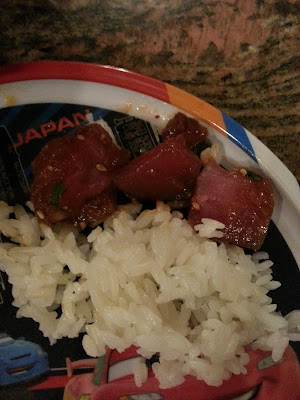Limu (LEE-moo) is the generic Hawaiian word for algae and other "plants" that live underwater. Seaweed is a common name for algae, which means it's not a weed or even a plant. Since I'm not a biologist, if you want more information on seaweed, check my favorite source. What does seaweed have to do with poke? It's another flavor option - ‘ahi limu poke!
Now, don't just run in the ocean and grab random limu to mix in with your poke - it might be too spicy! This summer we had a bunch of cases of stinging limu where people had bad allergic reactions after swimming in the ocean infested with a certain type of seaweed. Of course we didn't tell our boy that his fears of seaweed were justified!
If you are looking for limu for your poke, check your Asian specialty market for ogo, which is a specific type of seaweed used commonly in poke. If you really want it fresh from the ocean, first read about edible limu. And then try this tasty looking recipe!
After all my son's dislike of seaweed in the ocean, it was quite funny at Costco when he pointed at a huge package saying "I love that stuff!"
In case you were wondering, nori is the Japanese word for seaweed (red algae), so the dried sheet you see in the picture might be familiar if you like sushi. It is fairly common to see people eating nori out of little bags as a snack, and one of my son's friends apparently got him hooked. Not so much so that we risked buying a Costco-sized package of it though!
Nori is not used in poke, but it is one of the ingredients in furikake, another very common and very delicious seasoning for fish and rice. I just wanted to include it here because it also means seaweed.
This is my final installment on poke, although there is much more to learn! I hope these lessons improved your poke ordering skills and save you the trouble of asking the fish counter guy about each individual word like we did!
Are there other helpful poke variations I missed? Let me know in the comments!

















































